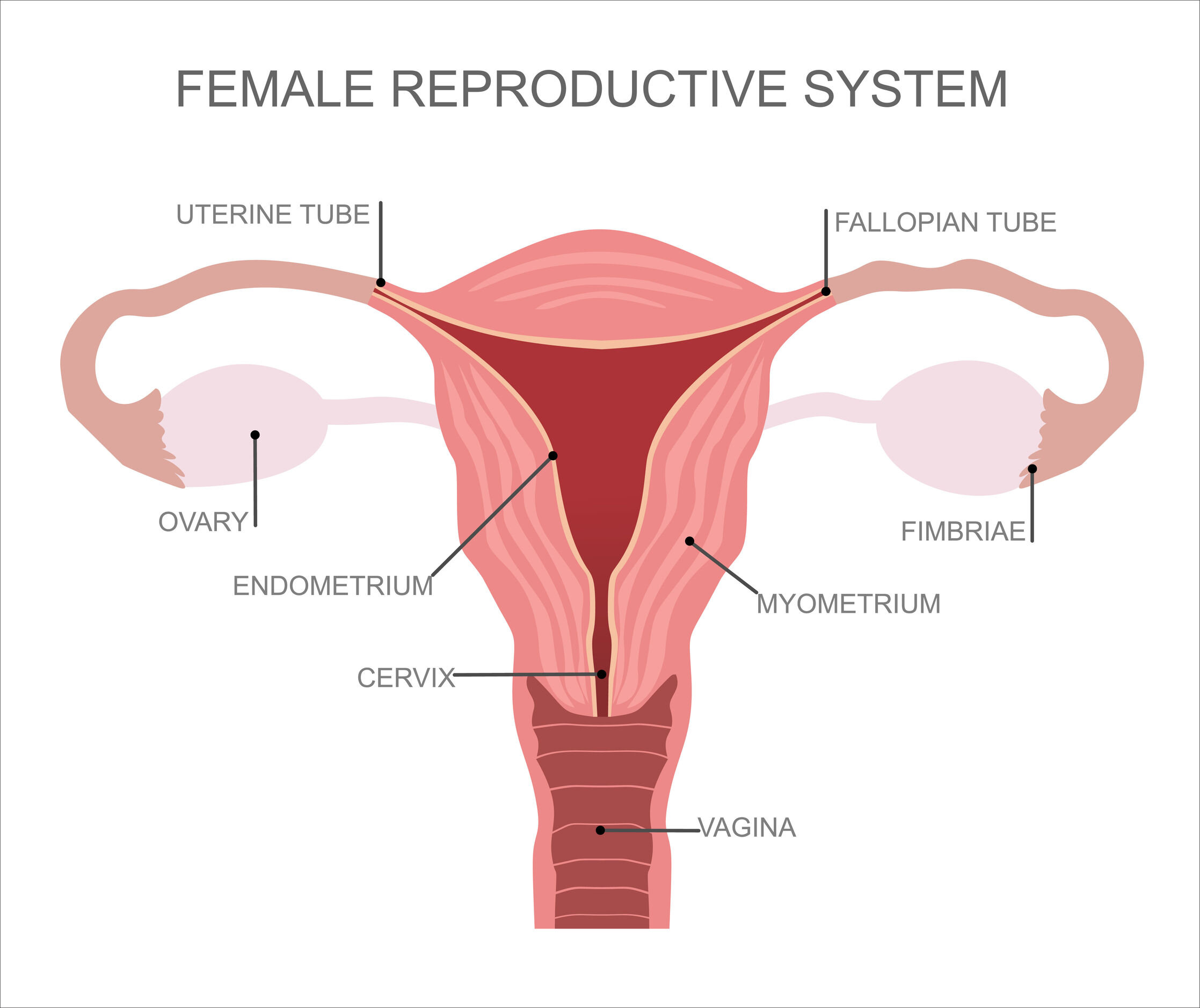Bishop Scores and What They Tell You About Your Cervix
Let’s talk about Bishop Scores and what they tell you about your cervix. Developed by Dr. Edward Bishop in 1964, the Bishop Score gives you and your care provider information about your cervix. Specifically, Bishop Scores tell you if your cervix is ready for labor and whether labor might occur sooner rather than later with or without an induction. An induction is a process intended to stimulate uterine contractions, leading to the birth of your baby. Bishop Scores also allow your care provider to estimate if an induction will successfully lead to a vaginal birth.
What is a cervix?
Your cervix is a segment of tissue positioned between the uterus and the vagina. It is shaped like a short tube. In the image below, you can see that your cervix is at the base of your uterus. When your baby is growing in your uterus, the cervix serves as a special gate that protects your baby from invaders, like bacteria, during pregnancy. When you are in labor, this gate essentially opens and gives your baby the opportunity to move downward towards and out of your vagina as you have uterine contractions.
Image of Female Reproductive System from 123rf.com
What do we want to happen with the cervix during labor?
During labor, we want your cervix to soften or ripen, dilate (open wide to 10 centimeters) and efface (shorten and thin up to 100%). Basically, we want your tube-shaped cervix to flatten as much as possible for your baby’s exit. When you are fully dilated and effaced, your cervix is paper thin, making it ideal for a vaginal birth. In some cases, your cervix begin to soften on its own a few weeks before you give birth. In other cases, you may require an induction to soften the cervix.
What does my cervix have to do with my Bishop Score?
When calculating your Bishop Score, your provider is considering the information learned about your cervix during a vaginal exam and ultrasound, such as if your cervix has begun to soften, dilate, and efface. The Bishop Score also considers your baby’s position and if he or she is higher up in the birth canal. Essentially, your Bishop Score tells your care provider how ready the cervix is for birth and if your baby is in an ideal position for when you do go into labor.
How is the Bishop Score calculated?
During a vaginal exam and ultrasound that occurs during 37-42 weeks of pregnancy, your care provider will assign a number to each area of the Bishop Score exam and together, this will give you a cumulative score. The Bishop Score focuses on five main areas that are assigned a score from 0 to 3.
What does the Bishop Score mean?
If you have a high Bishop Score, this information tells you that if you were medically induced, the induction is more likely to be successful and lead to a vaginal birth. Conversely, a low Bishop Score means if you were medically induced, the induction is less likely to be successful and may not lead to a vaginal birth. How does your care provider assign the cumulative score? There are several factors that your doctor will consider when calculating your score. Let’s look at this in further detail by reviewing the table below.
Need a visual representation of the information above? We have you covered.
Positioning (your cervix can point towards your back/posterior, straight down/middle or point towards your abdomen/anterior):
Consistency:
Effacement (notice that the cervical tissue is pulling upward and thinning):
Image of Cervical Effacement and Dilation courtesy of 123RF.com
Dilation (how much the cervix widens):
Image courtesy of @labor.nurse.mama on Instagram.com
Fetal Station (where your baby’s head is in relation to your ischial spines):
Image courtesy of bearsky23/shutterstock.com
Now, let’s talk about what your scores mean.
Example: Let’s say that upon vaginal examination and ultrasound, your care provider assigns the following points to each factor:
Cervical Positioning is anterior (2 points)
Cervical Consistency is medium (1 point)
Cervical Effacement is 40-50% (1 point)
Cervical Dilation is 3-4 cm (2 points)
Fetal Station is -1 or 0 (2 points)
Your cumulative score would be 8.
Example: Or your care provider assigns the following points to each factor:
Cervical Positioning is middle (1 point)
Cervical Consistency is medium (1 point)
Cervical Effacement is 40-50% (1 point)
Cervical Dilation is 1-2 cm (1 point)
Fetal Station is -1 or 0 (1 point)
Your cumulative score would be 5.
How do you interpret these results?
If you have a Bishop Score of 8 or more, you are more likely to start labor spontaneously and imminently. Should you need an induction, it is expected to be successful and lead to a vaginal birth.
Scores of 6 and 7 indicates that an induction might not successfully lead to a vaginal delivery as the cervix is not ripe enough.
With a score of 5 or less, you are less likely to have a successful induction and may need a cervical softener or ripener (such as Cytotec or Cervidil) to prepare for labor.
What can I do with this information if I have a Bishop Score under 8?
You have a few options. Assuming your pregnancy remains low risk and both you and your baby are still in good health, your care provider may talk to you about whether induction is the next logical step. In that scenario, you may opt to wait until your labor starts spontaneously rather than get induced. However, if you and/or your baby are experiencing serious complications, such as preeclampsia, infection, or low fetal heart rate, or you are 42 weeks pregnant, induction may be recommended to ensure an optimal outcome for you and your baby.
Will my Bishop Score definitively tell me when I can go into labor?
While helpful, the Bishop Score is just one way to predict whether an induction is needed. Please rest assured that a low Bishop Score does not mean that you will not have a wonderful birth on your terms.
Whether or not you can go into labor can be affected by numerous factors, including your baby’s position. For example, if your baby is in a posterior position, your body may need assistance in getting the baby into the optimal position. In the posterior position, your baby is facing your abdomen instead of your back or lefthand side and may not be able to press downward on the cervix to dilate and efface it sufficiently. When your baby’s head places pressure on your cervix, it will generally dilate and efface which is exactly what you want. In case your baby’s position is a concern, your care provider may recommend some movements, like going for walks or squatting, to encourage your baby to get into the best position.
Finally, every woman is different. If you visit your care provider and your cervix is not ready for labor, it may still be ready in a few days or weeks. It can be difficult to hear that your Bishop Score is low during an appointment, particularly if you are anxious to meet your baby, but understand that your Bishop Score does and will not define you or your birth.
Bottom Line
Your Bishop Score can provide you and your care provider with information about how ready your cervix is for labor. However, it is not a definitive way to determine if labor will occur sooner or later. Should your care provider recommend an induction, it is okay to take this time to evaluate your options with your birth team, including your partner and doula. Ultimately, it is important that you understand the benefits and risks of an induction so you can make the best, informed decision for your beautiful, growing family.








